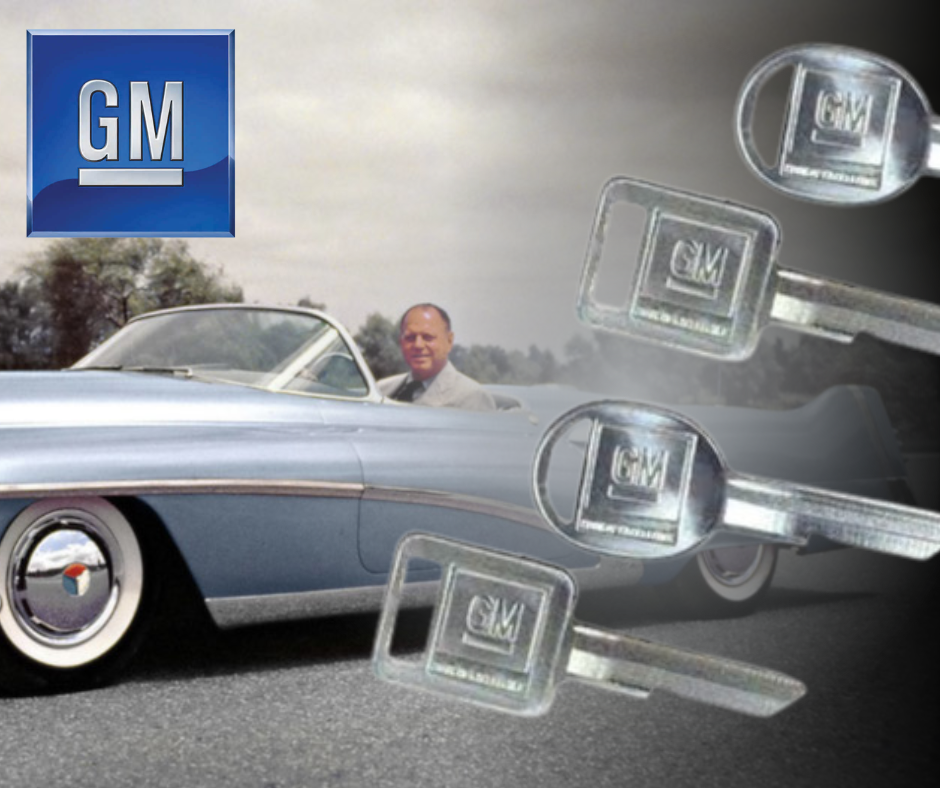Every now and then, a customer calls to let us know that they just bought a set of locks (or keys) and they don't fit their General Motors car. Not all locks are the same and if you're restoring your car for the first time, you might be a bit confused as to what keys or lock pawls you have.
Lock pawls are components within the door lock mechanism that engage with the door latch to secure the door in place. Keys, on the other hand, are used to operate the lock pawls and gain access to the vehicle.
How to Identify Keys?
There are a few ways to identify your keys for your General Motors car.
- Refer to your car manual for the key code.
- Ask a locksmith with expertise in vintage cars.
- Find the key code on the key (this is stamped on the key)
- Find they key code on some GM car lock cylinders.
1936 - 1966 General Motors Car Keys:
Between 1936 and 1966, General Motors made a one sided design: Briggs & Stratton 15, to operate their cars. Today, you'll find many pre-1966 models have aftermarket, double-sided grooved keys.
1967 and older General Motors Car Keys:
In 1967, General Motors introduced a new key system with multiple key groove styles on both sides. Early locks were a mix of Briggs & Stratton, and Rochester keys, but these made cars easy to steal, so much so that in the 1960's, multi-groove keys were introduced by both brands, due to a mandate. On these keys you might find the letter: A, B, C, D, E, H, J and K. If you do have an original key, it will likely have a letter stamped on it.
In the late 60's, the option for a round key for ignition fitting the doors was then replaced by the square head key, which can be found on most 1970's and older ignition locks, and never would fit the doors. The doors were then round, as were the boot/trunk keys and the glove box keys.
1986 & 1987 and older General Motors Car Keys:
By 1987, the security chip key with its 15 different ohm rated keys started to appear, first in Corvettes and other luxury cars. As time went on, they appeared in Camaro Firebird series models, but again, with oval head keys fitted in the doors.
Long and short shanks (extensions) on your key:
Something you might have noticed is the shaft / shank of the key, also referred to as the area your key connects. These are considered long or short, as pictured. It's common for aftermarket keys to have a short shank, which makes it impossible to fit the existing latch tongue without either extended shaft locks an extended lock pawl.
How to Identify Lock Pawls?
Lock pawls are usually located inside the door panel, near the door latch mechanism. To identify the lock pawls in your General Motors car, you can refer to the vehicle's service manual or consult with a professional mechanic. Additionally, you can visually inspect the door lock assembly to locate the lock pawls.
If you have any concerns about your car's lock pawls or keys, it is recommended to seek professional assistance to avoid any potential issues.













